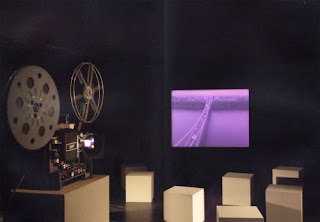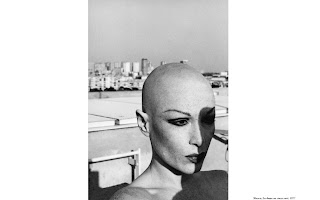

As you will learn from our statement below, Pinar Selek, who is a well-known feminist, anti-militarist and peace activist in Turkey, is going through an unfair trial for 11 years. To support her against this injustice, we are collecting signatures of organizations (not persons) that want to be witness to her and that believe her innocence. To support her, you can send your organization’s signature to us.
Contact e-mail address: yaseminsevval[at]yahoo.com
With solidarity,
WE KNOW PINAR SELEK
WE ARE IN SOLIDARITY WITH PINAR SELEK
One of the leading anti militarist-feminist , peace activists of Turkey, sociologist, researcher and writer Pinar Selek is tried to be brought to court again owing to a suit where she has already acquitted twice. Pinar Selek who has devoted her life to the marginalized and the oppressed, this time confronts the demand of life sentence by the 9th Penal Department of Court of Appeal.
Despite the court decision of acquittal she has been labelled as a “bomber” for 11 years and through all this time, she has never ceized to work and share her production with the public.
 Pinar Selek has shaped her private and working life according to the motto of “Living is the most important academic activity.” Born in 1971 in Istanbul, she graduated from Notre Dame de Sion French School and as an honour student from the Department of Sociology at Mimar Sinan University. In 1996‚ her translation selection titled Ya Basta-Artik Yeter [Enough]‚ dealing with the indigenous movement of Mexico‚ was published by Belge Publishing. Her MA thesis at the same university was published as Maskeler, Süvariler, Gacilar-Ülker Sokak: Bir Dislanma Mekâni [Masks, Cavaliers, Gacis - Ülker Street: A Place of Marginalization] (1st edition: 2001, Aykiri Publishing, 2nd edition: 2007, Istiklal Publishing).
Pinar Selek has shaped her private and working life according to the motto of “Living is the most important academic activity.” Born in 1971 in Istanbul, she graduated from Notre Dame de Sion French School and as an honour student from the Department of Sociology at Mimar Sinan University. In 1996‚ her translation selection titled Ya Basta-Artik Yeter [Enough]‚ dealing with the indigenous movement of Mexico‚ was published by Belge Publishing. Her MA thesis at the same university was published as Maskeler, Süvariler, Gacilar-Ülker Sokak: Bir Dislanma Mekâni [Masks, Cavaliers, Gacis - Ülker Street: A Place of Marginalization] (1st edition: 2001, Aykiri Publishing, 2nd edition: 2007, Istiklal Publishing).
The academic achievement of Pinar Selek relies heavily on her idealistic viewpoint of getting involved into the lives of her research subjects. In this respect she looked after street children and transvestites after her thesis was long finalized and established with them the Street Artists Atelier. Through this initiative both street children and transvestites got the chance of becoming integrated into society with their works of art.
Pinar Selek was just about to finish her research about the consequences and effects of the civil war in Turkey, which has gone on for decades and cost the lives of many people and so much grief, when she found herself accused of being part of a plot to plant a bomb in the Spice Bazaar (in Istanbul in 1998). She spent 2.5 years in prison and 11 years in the court rooms. While she was acquitted twice, she still had to counter attacks labelling and terrorizing her as a “bomber.” She fought with the single method she knew—namely‚ by distilling knowledge, love, and experiences from life. During this period she wrote Barisamadik [We Couldn’t Reconcile], focusing on various difficult peace struggles of modern Turkey (2004, Ithaki Publishing), and Sürüne Sürüne Erkeklik [Leading a Dog’s Life: Masculinity] (2008, Iletisim Publishing), taking up manhood within the context of military service experiences. She also has a book of tales called Su Damlasi [Drop of Water] (2008, Özyürek Publishing).
Pinar Selek has devoted her life to a moral attitude against war and to an active struggle against all kinds of violence without any pretext. She has taken part in numerous conferences, workshops and seminars about gender, militarism, violence, ecology, media, street children and marginalized groups. She also has published articles about these issues in various newspapers, magazines, and journals.
In 2001, she was one of the founders of Amargi Women Co-Op and organized women’s meetings in Diyarbakir, Istanbul, Batman, and Konya that became an important part of Turkey’s agenda. She is an active member of Amargi Women Co-Op, and since 2006 she has worked as editor and coordinator of Amargi Feminist Journal. She is among the founders of Amargi Feminist Bookstore (opened in 2008) and has acted as coordinator of the women readers and writers meetings (titled “Which Doors Do Our Experiences Open?”) that have been held in this place, the first feminist bookstore in Turkey.
During this long period of hard work more than 2000 people, including intellectuals such as Orhan Pamuk and Yasar Kemal, writers, film and theater actors, journalists, lawyers, activists, academics, and, of course, women have declared solidarity with Pinar Selek by stating, “We are witness to Pinar Selek’s attitude against violence.” While Pinar Selek continues her legal struggle and academic work, her supporters also go on with their struggle, both encouraging and strengthening each other.
We once again declare our solidarity with her, for we all know who Pinar Selek really is. We demand justice for Pinar Selek as well as a country where struggling for justice like Pinar Selek has done is imaginable and possible.
Amargi Feminist Journal
Ankara Woman Platform (Ankara Kadin Platformu)
European Women Lobby-Turkish National Coordination (EWL-TNC) (Avrupa Kadin Lobisi Turkiye Koordinasyonu)
Feminists from Ankara (Ankarali Feministler)
Filmmor (FilmPurple)
Woman Cooperative Foundation for Women’s Solidarity (Kadin Dayanisma Vakfi-KDV)
Forty Braid Woman Cooperative (Kirk Oruk)
KAMER Association and its 23 branches in East and South East Turkey
KAMER (Woman Center) Foundation
Kaos Gay and Lesbian Cultural Research and Solidarity Assocation
Lambda Istanbul LGBTT Solidarity Association
Pink Life LGBTT Association (Pembe Hayat)
Proletarian Action Party (EHP)
Revolutionist Socialist Proletaria Party (Devrimci Sosyalist Isci Partisi)
Supporting and Training Woman Candidates Association Ankara Branch (KA-DER Ankara)
Turkish Penal Code Woman Platform (TCK Kadin Platformu)
We Are Feminsts Platform-Ankara (FeministBiz Olusumu)
Woman Coalition for Elections (Kadin Koalisyonu)
Women for Women’s Human Rights (WWHR)-New Ways (KIHP)
Women from Purple Roof Woman Shelter Foundation (Mor Cati)
Women’s Constitutional Platform (Kadinlarin Anayasa Platformu)
Women’s Media Watch Platform (MEDIZ)
Women’s Solidarity Foundation (KADAV)
Critical Art Ensemble (CAE, USA)
Chto Delat Platform (Russia)



 BEIRUT BEREFT, ARCHITECTURE OF THE FORSAKEN AND MAP OF THE DERELICT.
BEIRUT BEREFT, ARCHITECTURE OF THE FORSAKEN AND MAP OF THE DERELICT.



 INTERVIEWER How does a book take shape for you?
INTERVIEWER How does a book take shape for you?

gecen persembe hayatim boyunca unutamayacagim bir performans izledim. merce cunningham'in yeni koreografisi "nearly ninety". cunningham'in doksaninci yasgununde ilk kez sahnelendi. beden mekan algilarimizdaki degisimin donum noktasi olarak neden onun koreografilerinin gosterildigini dunya gozuyle o hala hayattayken gorme sansini yakaladigim icin mutlu oldum. cok.
sade, bagirmadan, dalga dalga akarak, izleyicisine nebzeler halinde nufuz ederek. danslari tikanikliklara mentol etkisiydi.
performanstan sonra sahneye davet edildiginde merce tekerlekli sandalyesinin uzerinde minicikti. izleyciler arasinda hala hayatta olan kendi arkadaslari da vardi. dakikalarca ayakta alkislandi. sonra koca salon hep beraber ona happy birthday sarkisi soyledik. cok mutlu gozukuyordu. yasamini bitirmeden isinin bu kadar takdir edildigini gormek bir baska olmali.
butun performans boyunca sahnenin kosesine yansitilan gokkusagi john cage'in de anisina o gece daha bir anlamli geldi.
ps: herkes yazdiklarim hakkinda istedigini dusunmekte ve istedigi yorumu yapmakta ozgur. her yazilan da sahibini baglar. YTJ hakkinda girdigim postada tasin, yaptiklari birbirleri uzerinden degerlendirilen sanatcilara degil bu degerlendirmeyi yapan tembel elestirmenlere gittigini anlamak cok zor olmasa gerek. meraklilari bahsettigim jerry saltz yazisini bulup okuyabilir.
zaten yazacaktim ama bu vesileyle soylemis olayim; arkadasim/meslektasim adnan'a ispanya'daki sergisi icin basari ve bol sans diliyorum. kulaga gayet iyi geliyor, umarim her sey istedigi gibi gider.
 Slavs and Tatars
Slavs and Tatars Open Space/Art Cologne April 21 - 26, 2009
Open Space/Art Cologne April 21 - 26, 2009 

 GUEST OF CINDY SHERMAN - (unrated)
GUEST OF CINDY SHERMAN - (unrated)
 From 18 April to 2 August 2009, BAK, basis voor actuele kunst, Utrecht and the Van Abbemuseum, Eindhoven present Urgent Matters, a two-part solo exhibition by Sanja Iveković. The opening takes place on Saturday 18 April 2009 at 14.00 hrs at the Van Abbemuseum and at 19.00 hrs at BAK.
From 18 April to 2 August 2009, BAK, basis voor actuele kunst, Utrecht and the Van Abbemuseum, Eindhoven present Urgent Matters, a two-part solo exhibition by Sanja Iveković. The opening takes place on Saturday 18 April 2009 at 14.00 hrs at the Van Abbemuseum and at 19.00 hrs at BAK.
The Július Koller Society – občianske združenie
Pribinova 25
SK-811 02 Bratislava
Slovak Republic
ID number 4213 8124
Contact:
sjk@sjk.sk
www.sjk.sk